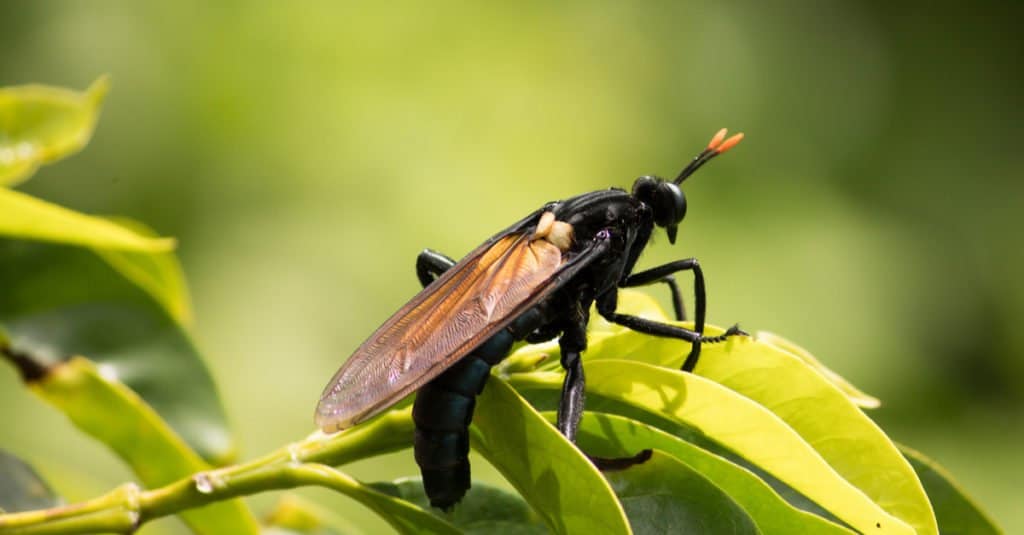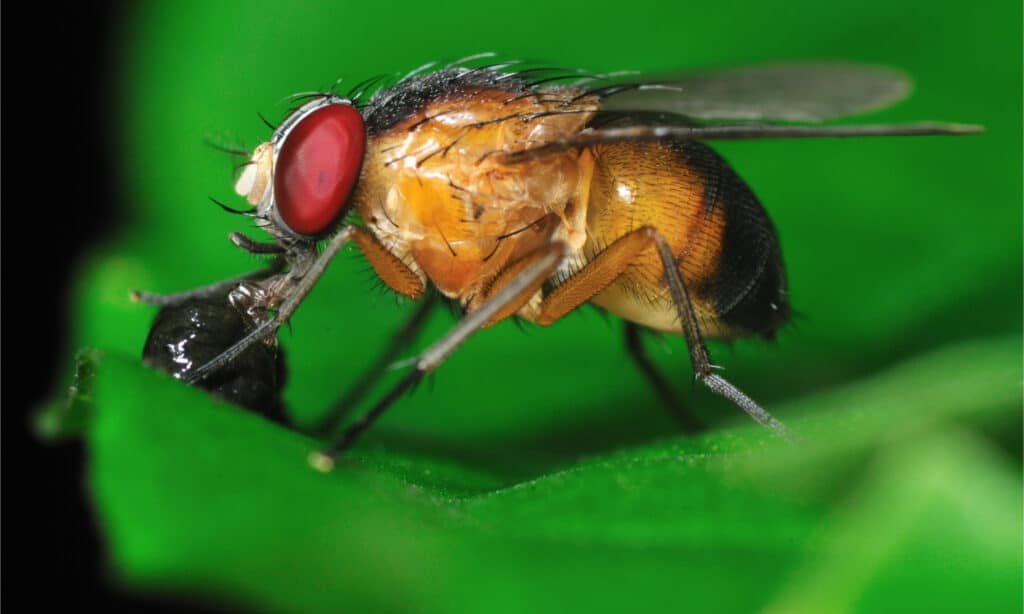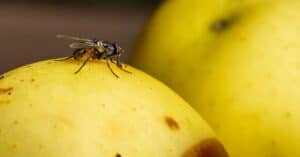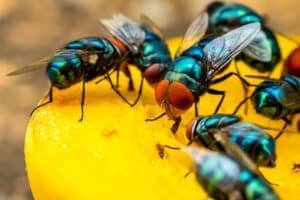Flies are diverse insects which are found in virtually every habitat and everywhere in the world apart from Antarctica. There are thousands of different species and they come in all different shapes and sizes. While some flies can be absolutely tiny, others can be frighteningly large. But just how big can they really get? Join us as we discover the largest fly in the world!
About Flies
Flies are insects in the order Diptera which contains around 1,000,000 different species – including horse flies, crane flies, soldier flies, and mosquitoes. It is one of the most diverse orders of insects and there is a vast range of sizes across it. The size of flies can vary from minuscule insects barely 0.1 inches long all the way up to larger species around 3 inches long. Despite this, all flies are characterized by a single pair of wings which is where the term Diptera came from as it literally means “two winged” in Greek. Their other characteristics are a streamlined body as well as the ability to manoeuvre incredibly well in the air. Flies also have large eyes and mouth parts as well as pads on their feet to help them cling to surfaces.
Given how diverse they are, it’s not surprising that flies also have a varied diet. Depending on the species, they can eat plants, fruit, vegetables, flesh, blood, or even faeces. Again, depending on the species and their diet, their mouth parts are developed for either piercing or sucking. Some – such as horse flies – make an incision in the skin and then lap up the blood that comes from the wound. Flies also have chemoreceptors which they use to smell and taste their food.
Many flies have long larval stages and short adult lives – typically living only a few weeks. Most flies undergo complete metamorphosis and go through four stages – egg, larvae, pupa, and the adult stage. However, some are ovoviviparous and deposit maggots rather than eggs. Incredibly, flies can lay up to 500 eggs over a period of 5 to 6 days!
The Largest Fly in the World

Gauromydas heros is almost 3 inches long and has a wingspan of around 4 inches!
©wesleylilin/Shutterstock.com
The largest fly in the world today is the little known Gauromydas heros. These giant flies are an incredible 1.3 to 2.8 inches long with a wingspan of almost 4 inches. They are members of the Mydidae family group which are known as Mydas flies. There are around 400 species of Mydas flies and they are generally the largest of all flies. They also tend to mimic wasps and hornets. Gauromydas heros generally have black bodies which are cylindrical-shaped and can look somewhat like that of a wasp at first glance. They have long, narrow wings which are white, brown, or orange. Additionally, their hind legs tend to be significantly longer and thicker than the rest of their legs.
Gauromydas heros is native to Brazil, Bolivia, and Paraguay where they typically live in arid and semiarid regions. Gauromydas heros larvae live in ant nests where they feed on immature insects. Adult males typically spend their time around different flowers where they drink the nectar. However, it is believed that adult females do not feed at all, although little else is known about them.
Despite their large and intimidating size and close resemblance to wasps, Gauromydas heros is not dangerous and they don’t bite or sting. Instead, they mimic wasps and other stinging insects to protect themselves from predators. This is because if they look like something that is dangerous they are less likely to be attacked – much the same as milk snakes mimic the appearance of venomous coral snakes.
Could Timber Flies be even Larger?
Although Gauromydas heros is widely recognized as the largest fly in the world, there could be a challenger for its title – the timber fly. The largest timber flies can sometimes have a body length of 3.1 inches long – longer than Gauromydas heros – although their wings are not quite as long, reaching only 3.3 inches. Despite this, they very rarely actually fly. Timber flies are large, stocky flies which tend to look like horse flies. There are 21 species of timber flies and they are all members of the family group Pantophthalmidae.
Timber flies live in Central and South America. They get their name from their larvae which live in trees and feeds on the wood. Females lay their eggs in dead or dying trees and when they hatch the larvae begins to feed on the wood, burrowing deeper inside the tree in the process. However, dead wood contains very few nutrients so it takes the larvae a long time to develop into adults – usually several months. Although they eat wood in their larvae stage, timber flies don’t eat at all as adults and live for only a few weeks.
Are Flies Really Pests?

Flies are incredibly important pollinators of flowers.
©Jordan Lye/Shutterstock.com
Despite being classed as pests for much of the time, flies are actually incredibly important animals. Although it is true that many flies can transmit diseases, they can be useful too. In fact, flies are incredibly important to the ecosystem. This is because they are highly important pollinators and are second only to bees.
Flies are also incredibly important for the disposal of dead plants and animals as they help to break down decaying material. Also, although they can be a problem to livestock, flies – or rather maggots – feed on dead flesh. In fact, they can even been used to clean wounds!
Not only that, but flies are the main food source of many birds as well as other insects, fish, amphibians, and some mammals. Without flies as a source of food many of these animals would struggle to survive. This in turn would impact other species which rely on these animals.
The photo featured at the top of this post is © wesleylilin/Shutterstock.com
Thank you for reading! Have some feedback for us? Contact the AZ Animals editorial team.






